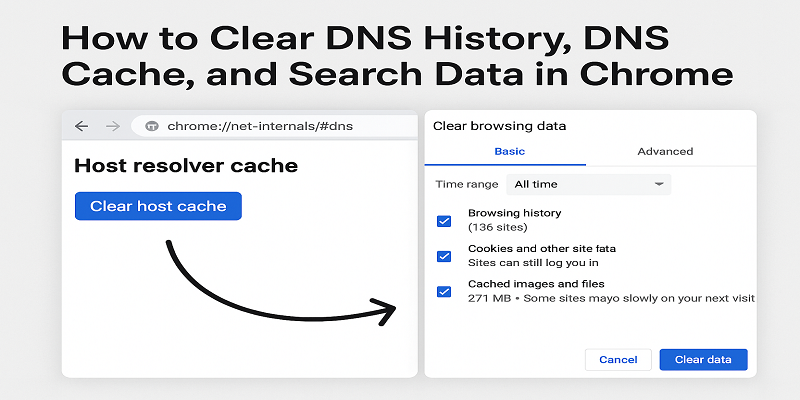Table of Contents
- What Are Cloud Storage Services?
- Key Features and Benefits
- ACCESS THE CONTENTS ANYWHERE
- FIND YOUR CONTENT FASTER
- TAG YOUR IMAGES AUTOMATICALLY
- RELIABLE AND SECURE STORAGE
- SAVES MONEY
- CONTROL CONTENT VERSIONS
- 1. Streamlined Content Organization:
- 2. Collaboration Made Easy:
- 3. Enhanced Security:
- 4. Access Anytime, Anywhere:
- 5. Improved Site Performance:
- 6. Cost-Efficiency:
- 7. Scalability:
- 8. Data Recovery and Backup:
- Top 8 Best Practices to Implement Cloud Storage for Companies in 2024
- 1. Pilot cloud storage using non-business-critical data
- 2. Leverage multi-cloud to avoid vendor lock-in
- 3. Specify your data retention policies before migrating
- 4. Incorporate cloud storage into IT compliance and audit protocols.
- 5. Consider investing in a private cloud infrastructure if your business operates within a regulated industry.
- 6. Prioritize remote work as a key focus area when strategizing for cloud storage implementation.
- 7. Optimize data transfer to avoid egress fees
- 8. Adopt a cloud-first cybersecurity solution
- Conclusion:
The world of blogging is constantly evolving, presenting bloggers with both new challenges and exciting opportunities as we step into 2024. Content creation, blog management, and accessibility are all critical aspects that bloggers need to address in today’s digital landscape.
As productivity and revenue across nearly every industry increasingly depend on internet-based solutions—from online accounting software to data storage—the right tools can make all the difference. Setting up an effective platform might require some initial effort, but it streamlines operations far more efficiently than traditional methods.
A powerful tool that can transform your blogging experience is cloud storage. How-cloud-storage-is-making-the-world-better highlights its pivotal role in enhancing various aspects of modern workflows. In this blog, we will explore how cloud storage services are revolutionizing blogging by providing efficient, secure, and flexible content management solutions for 2024 and beyond.
Discover how cloud storage can empower you to manage your blog more effectively and keep pace with the ever-changing demands of the digital age.
What Are Cloud Storage Services?
According to projections, the worldwide cloud storage industry would exceed $376.37 billion by 2029.
Cloud storage is a sophisticated data storage method that involves the secure retention of digital assets like photos, documents, videos, and various media formats. These files find their home on virtual or cloud-based servers provided by external service providers. This approach enables users to maintain their data on an offsite storage system, which can be conveniently accessed whenever necessary.
Cloud storage is a sophisticated architecture that empowers users to safeguard essential data and valuable media assets on external cloud servers. These servers are accessible to users via the internet, allowing them to connect seamlessly. The management and administration of these cloud storage resources are expertly handled by a cloud-based service provider, often referred to as utility storage.
Cloud storage has several advantages, ranging from increased accessibility to data backup. The most significant advantages are enormous storage capacity and low prices. Cloud storage offers on-demand services and eliminates the need to purchase and maintain your own data storage infrastructure. This provides agility, global scalability, and durability with “anytime, anywhere” data access.
Key Features and Benefits
Key features and benefits of cloud storage services include:
- Scalability: As your data expands, you may quickly extend your cloud storage.
- Data may be accessible from anywhere with an internet connection.
- Synchronisation of data: Multiple users can cooperate in real time.
- Cost-Efficiency: You just pay for the storage space you utilize.
- Data Security: Encryption and access controls protect your data.
The blogging business is no exception, since practically every part of it is dependent on the internet. They are always attempting to provide high-quality content and increase their web visibility. However, one of the most pressing challenges for bloggers is data storage.
Because content is the output of the blogging business, bloggers place a premium on its preservation and upkeep. The reality is that blogs are now included on practically every company website. Keeping the blog page updated offers various advantages for a business. It allows the organisation to communicate about their knowledge and competence because web pages may not have enough space.
Updating the blog page is another good SEO strategy. Since maintaining blogs is an essential aspect of every business, companies often look for cloud storage that they can use for uploading, storing, and sharing data. Cloud storage provides various benefits to company and blog owners when it comes to managing their sites.
ACCESS THE CONTENTS ANYWHERE
The first and most obvious advantage of using a cloud service for your blog is that you may work from any location. As long as you have an internet connection, you may use any device to access, change, and use anything stored to the cloud storage.
You won’t have to carry your bulky storage drives around so that you can use or present your blogs. Cloud storage is a significant advance over previous USB-based storage systems.
FIND YOUR CONTENT FASTER
Cloud storage solutions provide a more complex file organisation system, making it easier to discover files afterwards. Instead of looking via folders, utilise the search options that include categories or subjects.
It can save you a lot of time since you won’t have to recall where you wanted to store the file. According to surveys, bloggers who utilise cloud storage spend 25% less time to find their material than those who use traditional storage.
TAG YOUR IMAGES AUTOMATICALLY
Several cloud storage systems allow you to automatically tag photographs so that they show in searches. To tag images, these storage systems employ AI-based image recognition technologies. It not only helps you to save time in adding tags to your images for search engines but also makes it convenient for you to look for them later.
RELIABLE AND SECURE STORAGE
Cloud services are among the most secure kinds of storage available. You won’t have to worry about your hard drive getting lost or destroyed. Cloud storage also provides the most recent kinds of cybersecurity, giving you peace of mind.
However, it’s important to note that not all cloud storage providers offer the same level of security. Therefore, it’s crucial to ensure that the company you select provides end-to-end encryption and other essential cybersecurity measures. To explore the options available, you can refer to this comprehensive resource highlighting the nine most secure cloud storage solutions.
Cloud storage not only delivers dependable storage capabilities but also ensures secure and encrypted data transfers. The effects of content theft during the transfer procedure might be disastrous for your company. Cloud storage allows you to easily exchange huge files from anywhere in the globe.
This means you can bid farewell to the days of sending multiple bulky emails or frantic searches for USB drives in the office or at home. Instead, you only need to share the content’s link with the intended recipient, granting them instant access.
SAVES MONEY
Using cloud storage eliminates the need to purchase expensive servers to store your information on-site. You would also save money on rent because you would no longer require additional space to house the servers. You simply need to pay the licencing price, which frequently includes the hosting charge.
When you use cloud storage to share material, any modifications you make to the file are updated in real time. This implies that the modifications are accessible to anybody who has access to the site. You are not need to provide the content over and over again whenever it is changed. It also guarantees that the previous version of the content is not used.
CONTROL CONTENT VERSIONS
These are some of the most obvious benefits of blogging with cloud storage. Other benefits may exist based on your organization’s and industry’s particular demands.
However, before selecting one that will fulfil your needs, we propose that you properly assess each part. However, there is little doubt that the advancement of data storage through cloud-based solutions has been a boon to bloggers and business owners.
1. Streamlined Content Organization:
Content production and organisation are critical in the fast-paced world of blogging. Cloud storage services provide simple mechanisms for organising and categorising your material, making it easier to manage your blog’s ever-growing collection of posts, photographs, and multimedia. With efficient search and tagging features, you can quickly locate and retrieve your content, saving precious time.
2. Collaboration Made Easy:
Many bloggers collaborate with other writers, editors, and designers. Cloud storage facilitates seamless collaboration by allowing multiple users to access and work on the same documents simultaneously. With real-time editing and commenting features, your blogging team can work together from different locations, enhancing productivity.
3. Enhanced Security:
The security of the content on your blog is critical. To safeguard your data from unauthorised access and breaches, cloud storage providers employ powerful encryption and authentication methods. Furthermore, regular backups ensure that your material is safe even in the event of a natural disaster.
4. Access Anytime, Anywhere:
Blogging does not necessarily take place at your desk. Cloud storage services allow you to view your files from any location that has an internet connection. You may effortlessly manage your blog while travelling, attending meetings, or working from a coffee shop.
5. Improved Site Performance:
Cloud storage’s content delivery network (CDN) capabilities enhance your blog’s performance. By serving content from servers closer to your audience, cloud storage reduces loading times, ensuring that your blog loads quickly and delivers a seamless browsing experience to your readers.
6. Cost-Efficiency:
Maintaining physical servers or in-house storage solutions can be costly. Cloud storage offers a cost-effective alternative by eliminating the need for dedicated hardware and reducing maintenance expenses. You pay only for the storage and resources you use, making it a budget-friendly choice.
7. Scalability:
As your blog grows, so does your storage needs. Cloud storage services allow you to scale your storage space and resources easily. Whether you experience a sudden surge in traffic or want to expand your blog’s content, the cloud adapts to your requirements.
8. Data Recovery and Backup:
Data loss can be a blogger’s worst nightmare. Cloud storage services provide automated backup solutions, ensuring that your content is always recoverable in case of accidental deletions or technical issues. Your peace of mind is further guaranteed by the redundancy of cloud servers.
Top 8 Best Practices to Implement Cloud Storage for Companies in 2024
Even if there are certain problems, cloud storage installation is currently a top priority for businesses. It facilitates information access for big, dispersed teams working in a WFH context. It can enable you benefit from advanced data analytics without having to invest in on-premise storage for massive amounts of data. Most significantly, it facilitates interconnection of various applications and data sources, resulting in efficiency and commercial value.
Cloud storage use has risen dramatically in the previous year, and this trend is expected to continue for the foreseeable future. Here are eight recommended practises for making the most of this chance.
1. Pilot cloud storage using non-business-critical data
The implementation of cloud storage marks a significant change in your IT operational approach, transforming how other related processes are carried out.
It will have an impact on data-driven applications, business analytics, integrations, and other IT landscape components. Therefore, it is important to first trial cloud storage at a limited scale before implementing it across the organization. This will allow you to monitor its influence on linked IT operations and adjust implementation SLAs and parameters as needed. Conduct the initial trial with non-business-critical data to avoid disrupting live operations and to limit any negative consequences to a sandboxed environment.
2. Leverage multi-cloud to avoid vendor lock-in
Companies desire to combine a wide range of services and capabilities into a single package as the cloud storage business expands. However, this may result in vendor lock-in. If you rely on a single cloud environment for all of your storage requirements, every outage or unavailability in that environment has the potential to damage your whole storage landscape.
And, if your storage volumes grow over time, it will become progressively difficult to transfer out if necessary. To avoid this, it is best to use a multi-cloud landscape in which various data and application buckets are stored in multiple cloud environments and platforms are interoperable.
3. Specify your data retention policies before migrating
Data retention is the practise of keeping a data asset for a specific amount of time based on the requests of the data owner, commercial relevance, or industry norms. Retention policies specify not only how long data should be stored but also the timing and mechanism for retiring it. Data retention policies will determine how much cloud storage you occupy, the frequency of backup and transfer processes, and cloud storage costs.
Without a thorough retention policy document in place, businesses are likely to outpace their estimated storage volumes, resulting in budget overruns. That is why, before migrating to the cloud, you must describe your data retention rules and include them into service level agreements (SLAs) to ensure predictability and compliance later on.
4. Incorporate cloud storage into IT compliance and audit protocols.
IT compliance and audits often concentrate on on-premise settings and first-party managed storage, ignoring data stored in a distant location or by an external cloud vendor. This could cause non-compliance risks later on. Even if the data is stored by a public cloud vendor or a third-party MSP, enterprises must still take complete ownership of regulatory compliance around data privacy, compliance, and security. Cloud storage must be audited on a regular basis, with a complete inventory of your assets, their usage, and retention policies.
5. Consider investing in a private cloud infrastructure if your business operates within a regulated industry.
Regulated businesses, such as healthcare, finance, government, and education, usually collect and retain huge amounts of sensitive data. This might include anything from patient medical histories to school kids’ names and addresses or payment card information. For information like this, it might be beneficial to use private cloud storage to safeguard the data from the hazards of a multi-tenant cloud architecture.
Private cloud storage also protects you against vendor-related disruptions and downtimes, which would otherwise leave these critical data assets unavailable. In reality, the private cloud is mission-critical for businesses in regulated sectors where sensitive data is required for day-to-day business activities rather than merely compliance-related archives.
6. Prioritize remote work as a key focus area when strategizing for cloud storage implementation.
Remote work is currently a significant use case for cloud storage deployment and is expected to become the new normal in the near future. As a result, your cloud storage approach must consider the demands of a remote worker, from integrating with the appropriate productivity tools to imposing security regulations that limit remote access in specific instances. Outline procedures for preventing workers from accessing cloud storage through unfamiliar or unauthorised devices. Establish explicit policies to govern which data may be saved in the cloud and which must be maintained on-premise.
7. Optimize data transfer to avoid egress fees
To move data out of a public cloud platform, most charge for data retrieval (also known as egress costs). As you leave data stagnant in the cloud for longer periods of time, you encourage more dependence and even vendor lock-in. Your cloud costs are directly tied to the frequency with which you move data, and frequent retrieval (for example, to run on-premise analytics) will raise your resource usage in the form of egress fees.
There are two approaches to this. First, you may host analytics apps within the same public cloud, eliminating the need to send data elsewhere for processing. Second, to decrease retrieval fees, you can optimise each transfer by reducing data quantities.
8. Adopt a cloud-first cybersecurity solution
Finally, be certain that your cybersecurity solution takes into consideration your cloud storage investments. Trend Micro, for example, has Cloud One – Conformity, a cloud-first solution, and there are various cloud access security broker (CASB) technologies available. Even if the cloud only stores a small portion of your total data assets, it must be safeguarded by a cybersecurity solution to plug any gaps and ensure compliance with data protection regulations.
Conclusion:
In the dynamic world of blogging, adapting to new technologies and practices is essential for staying ahead. Cloud storage services, especially in 2024, are revolutionizing the way bloggers manage their content, providing streamlined organization, enhanced security, and scalable solutions. With improved accessibility and collaboration features, bloggers can elevate their content management strategies, making 2024 a landmark year for growth and success.
If you’re looking to leverage the full potential of cloud storage, consider Cyfuture Cloud. Offering robust, flexible, and secure cloud storage solutions tailored to meet the needs of modern bloggers, Cyfuture Cloud stands out with its advanced features and reliable performance.
By integrating Cyfuture Cloud into your blogging toolkit, you can enhance your workflow, ensure data security, and seamlessly scale your operations, setting the stage for a prosperous blogging journey in 2024. Explore how Cyfuture Cloud can make a difference and take your blogging to new heights.
Recent Post
Send this to a friend

 Server
Colocation
Server
Colocation CDN
Network
CDN
Network Linux
Cloud Hosting
Linux
Cloud Hosting Kubernetes
Kubernetes Pricing
Calculator
Pricing
Calculator
 Power
Power
 Utilities
Utilities VMware
Private Cloud
VMware
Private Cloud VMware
on AWS
VMware
on AWS VMware
on Azure
VMware
on Azure Service
Level Agreement
Service
Level Agreement 



















